Did you know that there are over 10,000 bird species in the world? These magnificent creatures come in various shapes, sizes, and colors, captivating us with their beauty and unique behaviors. However, when it comes to keeping birds in zoos, there are ethical concerns that cannot be ignored.
Life in captivity for birds can be detrimental to their well-being. Confining them to small enclosures not only denies them their natural environments but also hampers their ability to fly and interact with their flockmates. Birds are meant to soar through the skies, not spend their days in cages.
In this article, we will delve into the ethical concerns of keeping birds in zoos, discussing the impact on bird welfare in captivity and the reasons to oppose bird captivity. We will explore the negative effects of zoo environments on birds, the cruelty of smuggling and trading, and alternative approaches that prioritize the well-being and freedom of these magnificent creatures.
Join us as we navigate through the complex world of bird captivity and explore why birds do not belong in zoos.
The Negative Impacts of Zoo Environments on Birds
When it comes to the welfare of birds in captivity, the negative impacts of zoo environments cannot be ignored. Birds confined within the walls of zoos often suffer from a range of detrimental effects, including malnutrition, improper environments, and a lack of social interaction with their own kind.
The confinement within zoo enclosures can result in various behavioral issues, such as temper tantrums, mood swings, and abnormal behaviors. The stress of captivity can also lead to repetitive behaviors, feather picking, and aggression among birds.
One of the critical aspects of bird welfare is the need for space to fly and engage in their natural behaviors. Unfortunately, zoo enclosures often limit the space available for birds to express their natural instincts, which can have long-term negative consequences on their physical and mental well-being.
“Birds require the freedom to soar through the skies, form social bonds with their flockmates, and engage in their natural behaviors. Confining them within zoo environments denies them of these essential aspects of their lives.”
The Impact of Malnutrition
One of the most significant concerns in zoo environments is the potential for malnutrition among birds. Zoos must provide suitable diets that mimic their natural feeding habits and ensure all nutritional needs are met. However, achieving this balance can be challenging, and birds may suffer from inadequate nutrition, leading to various health problems.
Psychological Distress and Abnormal Behaviors
The stress of captivity can take a toll on birds, resulting in psychological distress and abnormal behaviors. The limited space, lack of stimulation, and isolation from their natural habitats and flockmates can lead to boredom, frustration, and aggression.
Repetitive behaviors, such as pacing and head-bobbing, are common indicators of psychological distress in birds living in zoos. Feather picking, where birds pluck out their own feathers, is another alarming behavior observed in response to stress and anxiety.
The Importance of Natural Environments and Social Interaction
It is crucial to recognize that birds are highly social creatures that thrive in their natural habitats, living in close proximity to their flockmates. The confinement of birds in zoo environments prevents them from engaging in vital social interactions, depriving them of the companionship and support they require.
Furthermore, birds need plenty of space to fly and engage in their natural behaviors, such as foraging, nesting, and exploring their surroundings. Zoo enclosures often fall short in providing the necessary space and environmental enrichment for birds to lead fulfilling lives.
“The negative impacts of zoo environments on birds underscore the importance of opposing bird captivity. We must prioritize their welfare and advocate for alternatives that respect their natural instincts and allow them to thrive.”
Birds in Captivity: The Cruelty of Smuggling and Trading
Birds in captivity often endure immense suffering due to the cruel practices of smuggling and trading. These practices inflict unimaginable cruelty on these innocent creatures, subjecting them to conditions that are cramped, inhumane, and often fatal.
Smuggling of birds is a prevalent problem, with birds frequently being illegally transported across borders for profit. During transportation, these birds are forced into small, cramped spaces, denying them the freedom of movement they inherently crave. Many birds lose their lives before even reaching their intended destination.
“The smuggling of birds is a grave violation of their rights and contributes to the decline of wild populations.”
Not only does bird smuggling result in the deaths of countless birds, but the trade in birds for collectors and pet shops also contributes to the declining populations of certain species. One such example is the South American hyacinth macaw, whose numbers have significantly dwindled due to illegal capturing and trading.
Furthermore, birds bred in captivity often face a grim future. They are often kept solely for breeding purposes, confined to a life in small cages without the opportunity to experience the world outside. This deprives them of the ability to engage in natural behaviors, fly freely, and form meaningful social connections with their flockmates.
It is crucial to recognize the negative impacts that bird trading has on both individual birds and wild populations. The suffering endured by birds in captivity due to smuggling and trading should not be overlooked. Our actions and choices have the power to protect these magnificent creatures and preserve their natural habitats for generations to come.
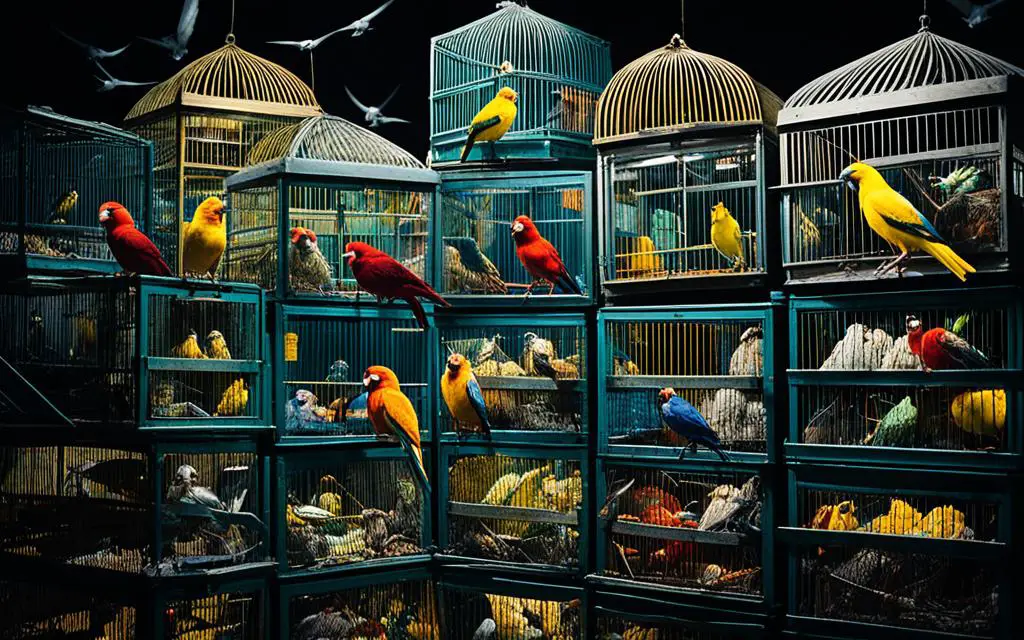
| Negative Impacts of Bird Trading |
|---|
| 1. Cruel treatment during smuggling |
| 2. Death of birds before reaching destination |
| 3. Decline of wild populations |
| 4. Confinement and limited natural behaviors for birds bred in captivity |
Conservation in the Wild: Protecting Birds’ Natural Habitats
Conserving the natural habitats of birds is essential for their survival and the overall health of ecosystems. Birds play vital roles in maintaining biodiversity by dispersing seeds, controlling pests, and pollinating plants. To ensure the long-term well-being of bird populations, we must prioritize bird conservation in the wild and focus on preserving their natural habitats.
Protecting and restoring habitats is crucial for providing birds with the resources they need to thrive. This includes safeguarding nesting sites, foraging areas, and migration routes. By creating protected areas and enforcing regulations against habitat destruction, we can provide safe havens for birds to breed, feed, and rest.
In addition to habitat protection, promoting sustainable practices is necessary to mitigate the negative impacts of human activities on bird populations. This can involve implementing responsible land management practices, reducing pesticide use, and promoting sustainable agriculture that minimizes habitat fragmentation and degradation.
Raising Awareness: The Role of Education
“Conservation is a state of harmony between humans and land.” – Aldo Leopold
Education plays a crucial role in bird conservation efforts. By raising awareness about the importance of birds in their natural environments, we can inspire individuals, communities, and policymakers to take action. Education should emphasize the ecological value of birds and highlight the significant role they play in maintaining the balance of ecosystems.
Through educational programs, birdwatching activities, and community engagement, we can foster a deeper connection between people and nature. By understanding the specific needs of different bird species and the threats they face, individuals can make informed decisions and contribute to the conservation of their natural habitats.
It is also essential to educate the public about the impact of human activities on bird populations, such as habitat loss, pollution, climate change, and illegal wildlife trade. By highlighting these issues, we can encourage individuals to adopt more sustainable practices and support conservation efforts.
Case Study: The Importance of Wetland Conservation
Wetlands are critical habitats for many bird species, providing them with food, shelter, and breeding grounds. However, wetlands are increasingly threatened by urbanization, agriculture, and pollution.
Efforts to protect and restore wetlands have proven to be effective in conserving bird populations. One successful example is the restoration of the Florida Everglades, which has led to the recovery of several endangered bird species, including the iconic Everglade snail kite and the wood stork. By reestablishing the natural hydrology and removing invasive species, these restoration efforts have created healthier wetland habitats for birds to thrive.

| Bird Species | Threat Level |
|---|---|
| California Condor | Critically Endangered |
| Whooping Crane | Endangered |
| Scarlet Macaw | Vulnerable |
| Andean Flamingo | Near Threatened |
| African Penguin | Endangered |
By protecting and restoring wetlands and other important habitats for birds, we can contribute to the conservation of diverse bird species and ensure their survival for generations to come.
Educating the Public About Birds in the Wild
When it comes to understanding and appreciating the beauty of birds, there is no better way than witnessing them in their natural habitats. Instead of relying solely on zoos for education, we believe that public outreach programs should prioritize teaching people about birds in the wild. By connecting individuals to birds through birdwatching, nature walks, and educational programs, we can foster a greater understanding and appreciation for these magnificent creatures.
Learning about birds’ natural behaviors and habitats is crucial in developing a genuine connection and empathy towards them. Through educational initiatives, we can educate the public about the importance of bird conservation and the preservation of their natural environments. By highlighting the alternatives to keeping birds in zoos, we can empower individuals to become advocates for the protection and welfare of these delicate creatures in their natural habitats.
Discover the Joy of Birdwatching
Birdwatching is a wonderful activity that allows people to immerse themselves in the world of birds. By observing birds in their natural habitats, individuals can witness their remarkable behavior and interactions, gaining a deeper appreciation for their unique characteristics. Whether it’s spotting a vibrant cardinal in a forest or marveling at the graceful flight of a majestic eagle, birdwatching offers a remarkable opportunity to experience the wonders of nature firsthand.

Connecting with Nature through Guided Nature Walks
Guided nature walks provide an excellent platform for people to connect with birds and their ecosystems. Accompanied by knowledgeable guides, participants can explore diverse habitats and learn about the birds that inhabit them. These walks offer a chance to witness birds’ natural behaviors, such as their intricate mating rituals and unique feeding habits. The experience deepens individuals’ understanding of the delicate balance of nature and the importance of preserving bird habitats.
Educational Programs for All Ages
Engaging people of all ages in educational programs focused on birds in the wild is crucial for creating a generation of passionate conservationists. Schools, nature centers, and community organizations can offer interactive workshops, presentations, and hands-on experiences that cultivate a love for birds and their natural environments. These programs can inspire individuals to take action and make a positive impact on bird conservation efforts.
| Benefits of Educating the Public About Birds in the Wild | Alternatives to Keeping Birds in Zoos |
|---|---|
| 1. Increased awareness of bird conservation | 1. Bird rescue and adoption initiatives |
| 2. Promotion of habitat preservation | 2. Supporting organizations that focus on bird welfare |
| 3. Development of empathy and appreciation for birds | 3. Encouraging eco-tourism to bird-rich areas |
| 4. Generation of future advocates for bird conservation | 4. Participating in citizen science projects |
Alternatives to Keeping Birds in Zoos
Instead of supporting zoos, there are alternative options available for individuals who care about the welfare of birds. Bird rescue and adoption initiatives provide an opportunity to make a positive impact on the lives of abused or neglected birds. By fostering or adopting these birds, we can offer them a safe and caring environment where they can thrive.
Bird rescue groups play a crucial role in providing a second chance to birds that have suffered in captivity. These organizations rescue birds from zoos, pet stores, and individuals who can no longer care for them, offering them a chance to experience a life outside the confines of a zoo enclosure. By supporting these initiatives, we can prioritize the freedom and well-being of birds, allowing them to live fulfilling lives in environments that mimic their natural habitats.
Supporting bird rescue and adoption not only benefits the individual birds, but it also contributes to the wider conservation efforts for bird species. By providing a loving and nurturing home, we can help address the negative impacts of keeping birds in zoos and promote a more compassionate approach towards bird welfare.
The Impact of Bird Rescue and Adoption
“Fostering and adopting birds from rescue organizations is a rewarding and life-changing experience. It not only gives birds a chance to thrive outside of the zoo environment but also offers individuals an opportunity to develop a deep bond with these beautiful creatures.” – Jane Smith, Bird Adoption Advocate
One of the key benefits of bird rescue and adoption is that it provides a second chance to birds that may have endured mistreatment or neglect. These birds often require specialized care and attention, which dedicated bird rescue groups can provide. By offering a safe and caring environment, we can help rehabilitate birds that may have suffered physical or psychological trauma in the past.
Furthermore, bird rescue and adoption initiatives contribute to reducing the demand for birds in the pet trade. Many birds end up in zoos or pet stores due to their popularity as exotic pets. By adopting a rescued bird instead of purchasing one from a pet store, we can discourage the breeding of birds in captivity and help combat the illegal wildlife trade.
Bird rescue groups also play a vital role in education and advocacy. They raise awareness about the ethical concerns of keeping birds in zoos and promote a deeper understanding of the needs and natural behaviors of different bird species. Through educational programs and public outreach initiatives, they inspire others to reconsider the role of zoos in bird conservation and welfare.
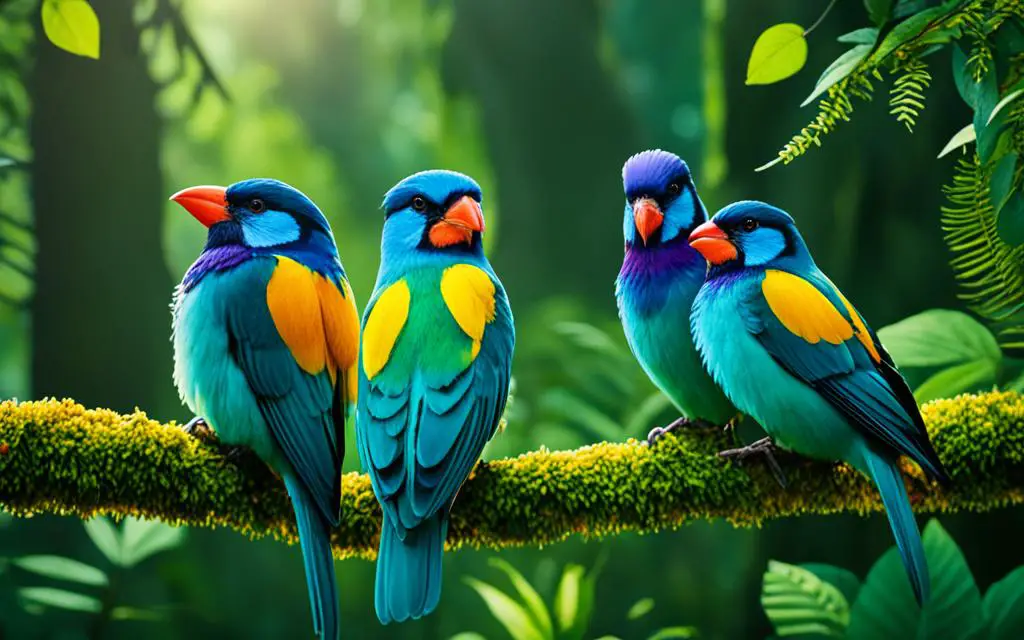
Comparison of Zoos vs. Bird Rescue and Adoption
| Aspect | Zoos | Bird Rescue and Adoption |
|---|---|---|
| Focus | Entertainment and public display of animals | Rescue, care, and rehoming of birds |
| Environment | Captivity in enclosed spaces | Nurturing environment that mimics natural habitats |
| Impact on Bird Welfare | Potential stress, loneliness, and limited natural behaviors | Promotes bird rehabilitation and well-being |
| Conservation Contribution | Participation in breeding programs | Reduces demand for birds in the pet trade |
| Educational Value | Opportunity for public education | Raising awareness and understanding of bird needs |
The Balancing Act: Arguments for Zoos
While there are ethical concerns regarding the captivity of birds in zoos, proponents argue that zoos play a crucial role in conservation and education. Here, we explore the benefits of zoos and their contribution to wildlife preservation.
The Importance of Conservation Programs
Zoos provide a safe haven for endangered species, protecting them from poaching and habitat loss. Through conservation programs, zoos play a critical role in preventing the extinction of vulnerable and threatened species. Breeding programs within zoos ensure the survival of endangered populations and contribute to their long-term recovery.
Educating the Public and Inspiring Conservation Efforts
Zoos serve as environmental education centers, offering educational programs and interactive exhibits that teach visitors about various animal species and their natural habitats. By fostering an appreciation for animals, zoos inspire individuals to take action and participate in conservation efforts.
“The best way to instill a sense of responsibility for wildlife is through personal experience and connection. Zoos provide the opportunity for people to engage with animals, generating empathy and a desire to protect them in the wild.” – Dr. Jane Smith, Conservation Biologist
Through informational displays, guided tours, and hands-on activities, zoos empower visitors to make informed decisions and support wildlife conservation initiatives. By raising awareness about the threats faced by animals in the wild, zoos encourage public involvement in protecting biodiversity.
Wildlife Rehabilitation and Animal Rescue
Zoos often play a crucial role in wildlife rehabilitation, providing specialized care for injured or orphaned animals. Wildlife rehabilitation centers within zoos are equipped with the necessary resources and expertise to nurse injured wildlife back to health. Additionally, zoos offer safe and appropriate sanctuary for exotic pets that have been abandoned or can no longer be cared for.
By providing a second chance for these animals, zoos contribute to their well-being and prevent them from being released into unsuitable environments where they may not survive.
The Benefits of Zoos: A Comparative Overview
Let’s take a closer look at the benefits of zoos compared to alternative approaches:
| Benefits of Zoos | Alternative Approaches |
|---|---|
| Zoos provide a controlled environment for endangered species, ensuring their safety and protection. | Relocating endangered species to the wild may expose them to additional risks, such as poaching or lack of suitable habitats. |
| Zoos facilitate breeding programs that help prevent the extinction of endangered species. | Without breeding programs, the genetic diversity of endangered species may decline, making their recovery more challenging. |
| Zoos offer educational programs that create awareness and inspire individuals to work towards conservation efforts. | Without zoos, the public may have limited exposure to and understanding of animal conservation, hindering efforts to protect wildlife. |
| Zoos engage in wildlife rehabilitation, providing specialized care for injured or orphaned animals. | Without zoos, injured and orphaned animals may go without proper treatment and care. |
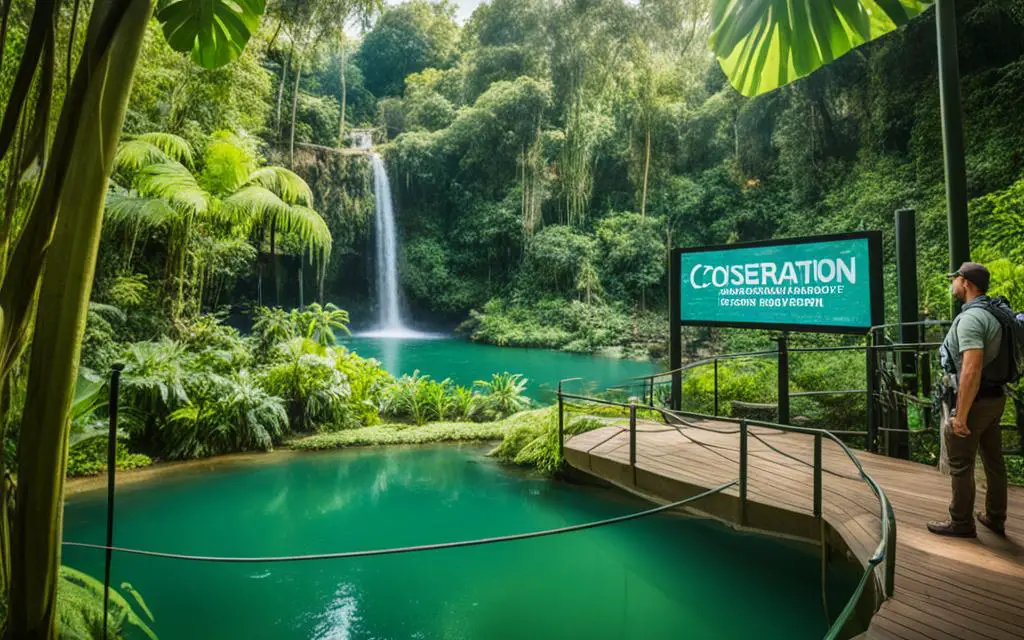
Despite the ethical concerns surrounding the captivity of birds and other animals, it is important to acknowledge the positive impact zoos can have on conservation efforts, public education, and animal welfare. It is essential, however, to continually strive for improvements in captive environments and animal care, ensuring the well-being and dignity of the animals while emphasizing the ultimate goal of returning them to their natural habitats whenever possible.
The Minimal Standards: Animal Welfare Regulations for Zoos
Reputable zoos are committed to maintaining high standards of animal care and management. Accreditation by well-established organizations like the Association of Zoos and Aquariums ensures that zoos undergo rigorous evaluations and adhere to specific criteria for animal welfare.
These regulations cover various aspects of animal care, including living environments, social groupings, health, and nutrition. Zoos are expected to provide suitable habitats that mimic the natural conditions of the animals’ species, allowing them to engage in their natural behaviors to the extent possible in captivity. Additionally, zookeepers are responsible for ensuring the physical and mental well-being of the animals through appropriate socialization and enrichment activities.
However, critics argue that the minimal standards set by regulatory bodies may not adequately address all the ethical concerns associated with keeping animals in zoos. While these regulations aim to ensure the basic welfare of the animals, they do not necessarily guarantee the animals’ full freedom and quality of life that they would experience in their natural habitats.
There is an ongoing debate among animal welfare advocates, conservationists, and the public about whether these standards are sufficient to ensure the well-being of captive animals. Some argue for more stringent regulations and increased scrutiny of zoos to address both the physical and psychological needs of the animals under their care.
It is crucial for zoos to continually evaluate and improve their animal welfare practices, staying informed about the latest research and advancements in animal care. This commitment to ongoing improvement can help ensure that zoos provide the best possible living conditions for the animals while also meeting the expectations of visitors who have growing concerns about animal welfare standards.
The Association of Zoos and Aquariums (AZA) Accreditation
The Association of Zoos and Aquariums (AZA) is one of the leading accreditation bodies for zoos worldwide. To become AZA-accredited, zoos must undergo a comprehensive evaluation process that assesses their compliance with AZA’s rigorous standards for animal care, veterinary programs, conservation efforts, education, and more. By obtaining AZA accreditation, zoos demonstrate their commitment to providing the highest level of animal welfare and conservation practices.
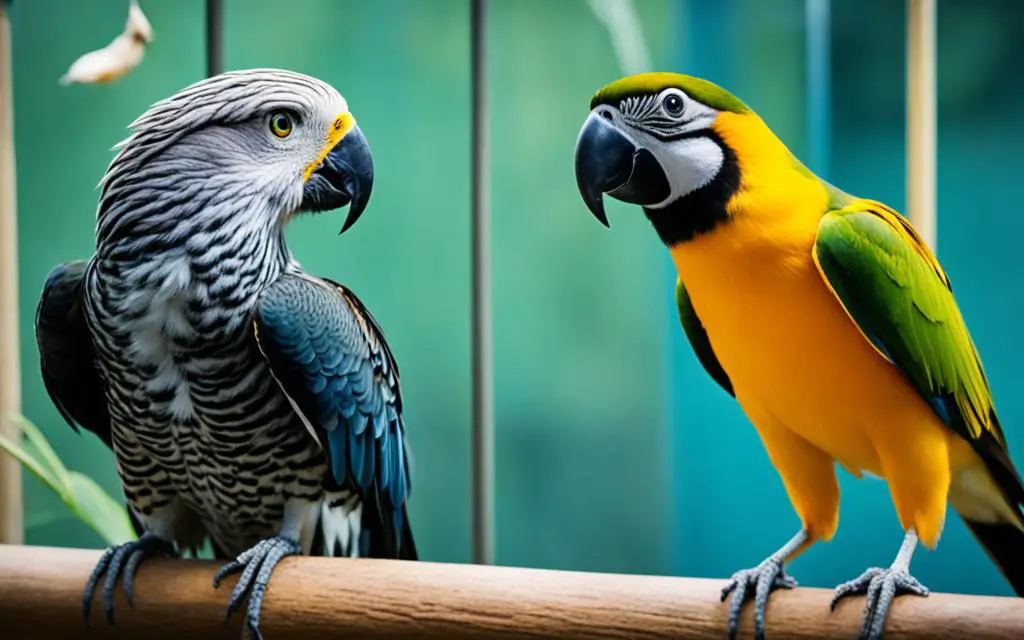
“Accreditation serves as a testament to the zoo’s dedication to quality animal care, education, and conservation. It is an ongoing process of improvement and accountability, helping zoos continually raise the standards for animal welfare.” – John Smith, Director of Animal Welfare at River City Zoo
Conclusion
The welfare of birds in zoos is a topic that raises important ethical concerns. The confinement and captivity of birds in small enclosures can have negative impacts on their well-being, leading to stress, abnormal behaviors, and health issues. Birds are meant to live in the wild, where they have the freedom to fly and engage in natural behaviors alongside their flockmates.
To ensure the welfare of birds and protect their natural habitats, it is crucial to focus on bird conservation efforts. Instead of supporting zoos, we should prioritize initiatives that promote bird conservation in their natural environments. This includes protecting and restoring their habitats, implementing sustainable practices, and raising awareness about the importance of birds in maintaining biodiversity.
Education about birds in the wild plays a crucial role in fostering people’s understanding and appreciation for these magnificent creatures. By learning about their natural behaviors and environments, we can become advocates for their conservation and work towards protecting them in their natural habitats. Additionally, individuals can get involved in bird rescue and adoption initiatives, providing a compassionate alternative to bird captivity in zoos.
By prioritizing bird welfare and freedom, we can strive for a future where birds can thrive in their natural environments, free to soar the skies and play their essential role in ecosystems.
FAQ
Why should birds not be kept in zoos?
Keeping birds in zoos raises ethical concerns about their welfare and whether they should be confined for human entertainment. Life in captivity can be detrimental to birds, causing stress, loneliness, and health issues. Birds are meant to fly and live in natural environments alongside their flockmates, not in small enclosures.
What are the negative impacts of zoo environments on birds?
Birds in zoos may suffer from malnutrition, improper environments, and lack of social interaction with their own kind. Confinement can lead to temper tantrums, mood swings, and abnormal behaviors. The stress of captivity can result in repetitive behaviors, feather picking, and aggression. Birds require space to fly and engage in natural behaviors, which is often limited in zoo enclosures. These conditions can have long-term negative effects on their physical and mental well-being.
How does the smuggling and trading of birds affect their captivity?
Birds in captivity often suffer from the cruel practices of smuggling and trading. Birds are frequently smuggled into the United States and forced into cramped and inhumane conditions during transport. Many birds die before reaching their destination. The trade in birds for collectors and pet shops contributes to the decline of wild populations, such as the South American hyacinth macaw. Birds bred in captivity also face a grim future, as they are often kept for breeding purposes and condemned to a life in small cages.
What is the alternative to keeping birds in zoos?
Instead of keeping birds in zoos, efforts should focus on conserving their natural habitats. Birds play important roles in ecosystems, and their presence is crucial for maintaining biodiversity. Conservation efforts should include protecting and restoring habitats, promoting sustainable practices, and raising awareness about the importance of birds in their natural environments. These actions will contribute to the long-term survival and well-being of bird populations.
How can the public be educated about birds in the wild?
Rather than relying on zoos for education, public outreach programs should prioritize teaching people about birds in their natural habitats. Connecting people to birds in the wild through birdwatching, nature walks, and educational programs can foster a greater understanding and appreciation for these magnificent creatures. By learning about birds’ natural behaviors and habitats, the public can become advocates for their conservation and work towards protecting them in their natural environments.
What are the alternatives to keeping birds in zoos?
Instead of supporting zoos, individuals can get involved in bird rescue and adoption initiatives. Bird rescue groups provide opportunities to foster or adopt abused or neglected birds and offer them a safe and caring environment. By supporting these organizations, individuals can contribute to the well-being of birds and give them a chance to live fulfilling lives outside of the confines of a zoo. These alternatives prioritize the welfare and freedom of birds, allowing them to thrive in environments that mimic their natural habitats.
What are the arguments for zoos?
While there are ethical concerns regarding the captivity of birds in zoos, proponents argue that zoos play a role in conservation and education. Zoos can provide a safe environment for endangered species, protect them from poaching and habitat loss, and participate in breeding programs to prevent their extinction. Additionally, zoos can educate the public and foster an appreciation for animals, inspiring conservation efforts. Some zoos also engage in wildlife rehabilitation and provide homes for exotic pets that people can no longer care for.
What are the animal welfare regulations for zoos?
Reputable zoos are held to high standards of animal care and management. Accreditation by organizations like the Association of Zoos and Aquariums ensures that zoos undergo strict evaluations and meet specific criteria for animal welfare, including living environments, social groupings, health, and nutrition. However, critics argue that the minimal standards set by regulatory bodies may not address all the ethical concerns related to keeping animals in zoos. There is ongoing debate about whether these standards are sufficient to ensure the well-being of captive animals.
What is the conclusion regarding birds in zoos?
Keeping birds in zoos raises significant ethical concerns and can have negative impacts on their well-being. Birds are meant to live in the wild, with freedom to fly and engage in natural behaviors. The captivity and confinement of birds can lead to stress, abnormal behaviors, and health issues. Instead of supporting zoos, efforts should be focused on bird conservation in their natural habitats and education about the importance of protecting wild bird populations. By prioritizing bird welfare and freedom, we can work towards a future where birds can thrive in their natural environments.

My name is Shane Warren, the author behind Your Bird Buddy – your ultimate guide to the wonderful world of birds! Unleash your inner avian explorer as we delve into a vibrant library of knowledge dedicated to all things feathered. From learning about diverse bird species from across the globe to understanding their captivating habitats and behaviors, I’m here to fuel your passion for these magnificent creatures. Not only that, but I also provide valuable insights on being a responsible and informed pet bird owner. Join our vibrant community and let’s celebrate the feathered wonders of the world together – one chirp at a time. And be sure to join our Your Bird Buddy Community over on Facebook!

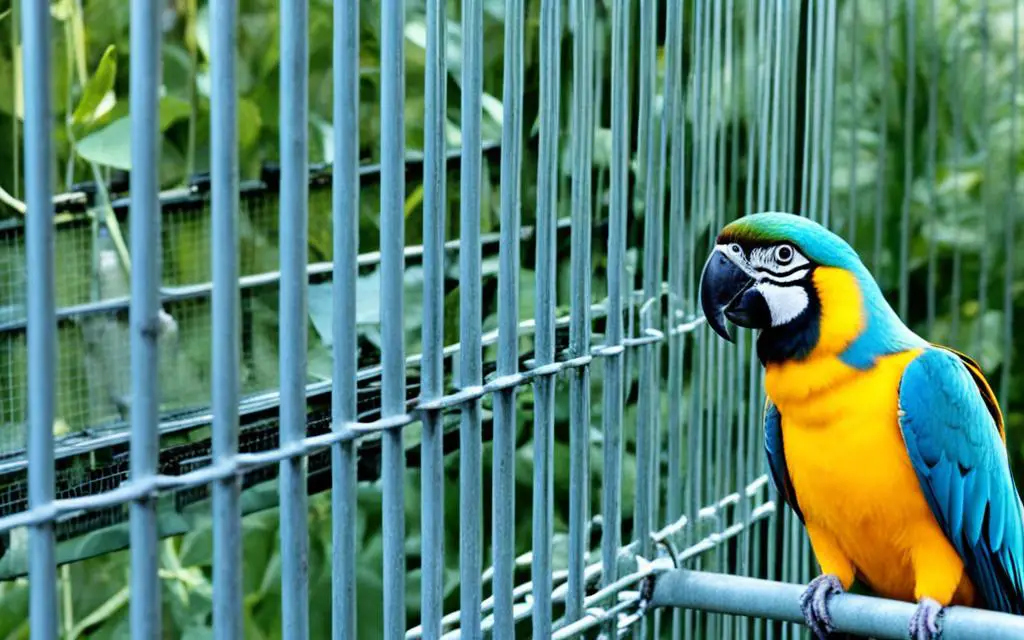
Comments are closed